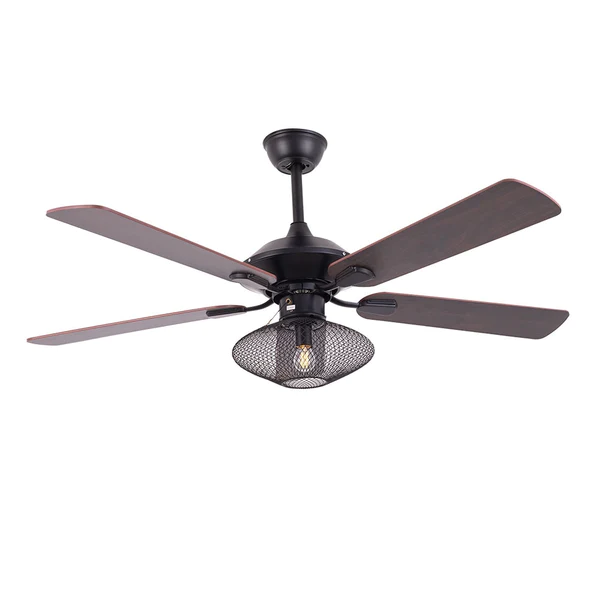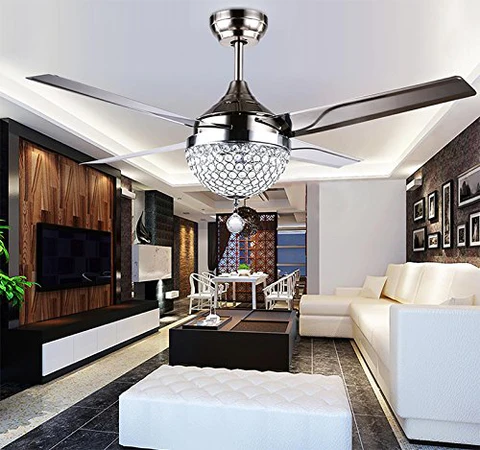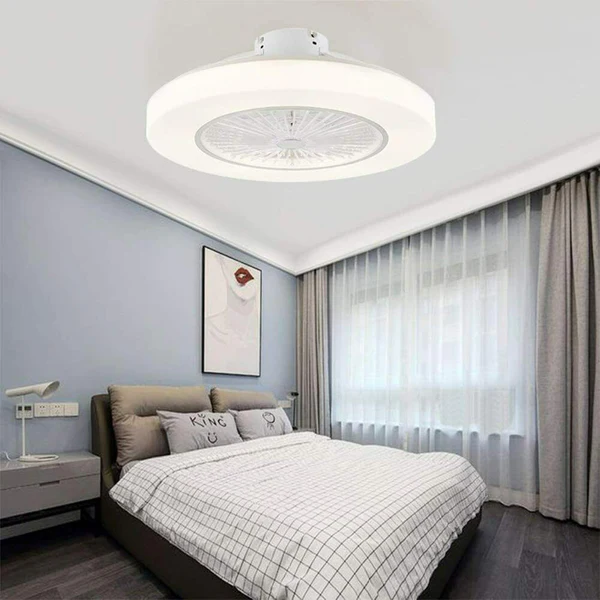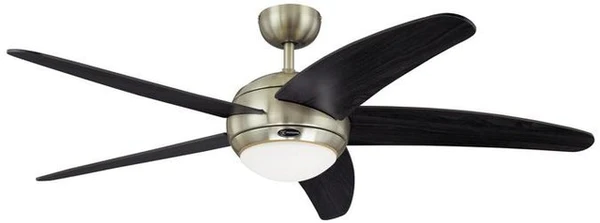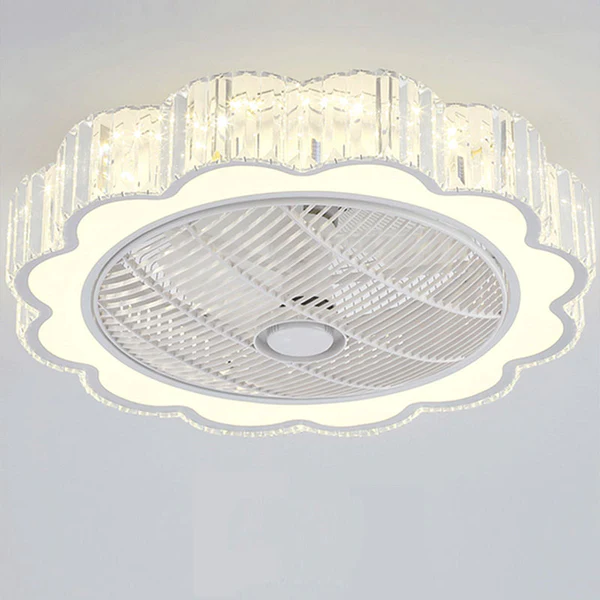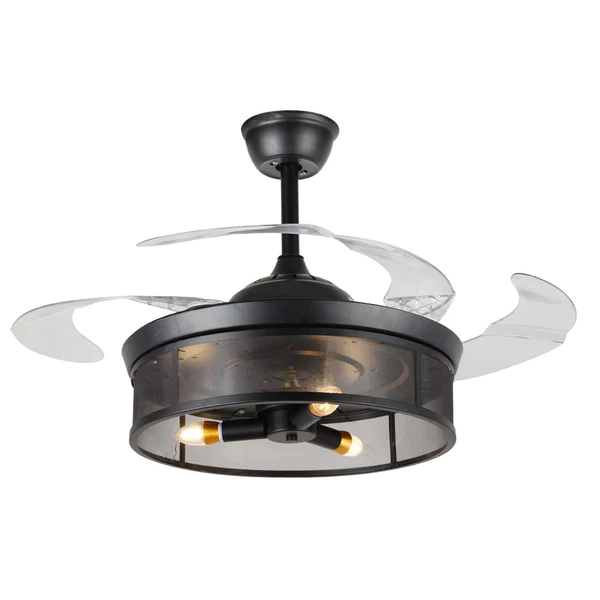The summer season can be pretty unforgiving in different parts of the world, and maintaining a cool and breezy home environment can be challenging, especially with the ever-rising electricity prices. For most people, an air conditioner can be too expensive over the long run, especially if you're planning to make them run all day long, and this is where ceiling fans come in.
Ceiling fans are a great alternative to air conditioners; not only do they provide cooling for your home, but they also provide adequate lighting for your room. Typically, a ceiling fan consumes about .06 to .010 kilowatt-hours, which translates to 0.004 cents per hour, and about $3 per month, if run the whole day; this is far better than the cost to run an air conditioner which can reach about $400 per month.
This article will tackle how efficient ceiling fans are, how much they cost to run, what to look for when buying a ceiling fan, and where to find high-quality ceiling fans online.
Let's get right into it.
Do ceiling fans use much electricity?
While most people use wattage to measure how much electricity appliances need, electric providers much prefer the use of kilowatt-hours. Ceiling fans are very efficient; they are one of the most efficient tools used for cooling.
A ceiling fan can consume 0.0311kWh per hr on average; of course, this value can change depending on the type of ceiling fan, the manufacturer, and its efficiency grade.
Regardless of this, a ceiling fan uses far less electricity when compared to an air conditioner. Ceiling fans use about 75 watts per hour, while an air conditioner uses 700-2000 watts per hour.
What is Fan Efficiency Grade?
You might have seen a FEG seal on your new appliances, such as refrigerators and air conditioners.
Generally, ceiling fan efficiency ratings measure how well a machine converts mechanical energy into air power. Ceiling fans usually feature the FEG seal in the packaging or the unit itself, highlighting the fan's energy efficiency. Keep in mind that FEG seals typically offer three shapes that could also include highlights from a particular style.
When buying a ceiling fan, purchase one with a high Fan Efficiency Grade to minimize your energy consumption over the long run.
How much does it cost to run a ceiling fan?
The cost to run a ceiling fan can vary heavily because of several factors such as the fan's energy efficiency, size, speed, and the type of motor. Generally, a ceiling fan will run you about 0.004 cents per hour, and $3 per month, if run 24/7.
DC motor ceiling fans tend to be more energy-efficient to run for 8 hours a day; for a low 60-94 RPM fan speed, you can expect to pay about $0.99 daily. At the same time, a medium 130-164 RPM and high 200-234 RPM fan speeds can cost you about $2.88 and $5.04 per day, respectively.
On the other hand, AC motor ceiling fans require $3.15, $7.02, and $10.71 for low, medium, and high rpm speeds.
Another factor affecting the cost of running a ceiling fan is its size. For a Medium-sized ceiling fan, approximately 42″ to 48″ in diameter, you can expect to pay about $0.022 for a fan running 8 hours a day.
For large ceiling fans about 50″ to 54″ in diameter, it costs about $0.028 per 8 hours. And lastly, for the largest types of ceiling fans with a diameter of 56″ to 84″, expect to pay about $0.042 per night.
What should I look for when buying a ceiling fan?
Buying a ceiling fan can be quite a hassle, especially with the many factors you have to account for. Here are some things to consider in choosing the best ceiling fan for your home.
Energy efficiency
To minimize the cost of running a ceiling fan, it's best to choose a ceiling fan that is energy efficient. You can do this by researching the fan's efficiency grade and selecting one with the highest efficiency grade, as this will drastically save you money in the long run.
A newer model of ceiling fans typically keeps energy costs at a minimum as they are installed with more energy-saving motors when compared to an older model.
Size and placement
Before buying a ceiling fan, make sure to finalize the available space size and where you want to put your ceiling fan. The bigger the area you have, the bigger the ceiling fan you should purchase.
If you are planning to put a ceiling fan in your bathroom, then make sure to purchase a ceiling fan sized 29" or less. For a typical bedroom area, it's advised to buy a 50" or 52" sized ceiling fan. And for larger areas, a 54" sized ceiling fan might do the job at cooling the temperature of your living room, or master bedroom.
Also, make sure where you are planning to put your ceiling fan. If you plan to put your ceiling fan outside or in wet conditions like your bathroom, you should purchase ceiling fans with motor-protecting coverings to prevent them from getting damaged by water.
Motor
The motor inside ceiling fans is perhaps the most essential component as they are tasked with converting electricity to mechanical energy, turning the blades around. Make sure to find heavy-duty ceiling fan motors with sealed bearings.
It's typically advised to purchase a ceiling fan between the mid-range and high-ranged price as they are installed with reliable motors that are more than capable of circulating air to your home.
Mid to high-range price ceiling fans will also save you tons of money in the long run as they are comparably more energy efficient.
Lights and style
Ceiling fans are not only designed to circulate air to your home but they are also tasked with providing adequate lighting to a specific area in your house. Here are the different styles of ceiling fans available on the Simply Light Fixtures website.
Standard Ceiling fan
The standard ceiling fans are the ones that are the most commonly installed in households. It consists of a metal arm, a downrod, and blades, which can be made with wood, plastic, or metal.
One of these is the OUKANING 52 Ceiling Fan, a wood-finish, three-speed set ceiling fan with five blades and space for one incandescent bulb. The OUKANING 52 Ceiling Fan is available for just $238.00 and is great to put in your home and the working office space.
Smart Ceiling Fans
With the ever-advancing human knowledge in science, our technology has become increasingly intelligent by the day. Smart ceiling fans are packed with remote control, timers, and easy activation and deactivation.
One of these is the Crystal Ceiling Fan Light which features a polished steel finish and a body made of wood. It has space for five dimmable LED lights, five steel blades, and convenient remote control.
Low-Profile Ceiling Fans
Low-profile ceiling fans are also known as hugger fans. They are designed to cool the temperature for rooms with lower ceiling heights. These fans are commonly installed in homes with a ceiling height of eight feet or less.
An example is the Modern Invisible Ceiling Fan Lights, a modern-style ceiling fan capable of lighting up an area over 10-15 square meters. It uses LED lights and is great for a study room, main bedroom, and even hotels and parlors.
Indoor ceiling fan
Another type of ceiling fan is the indoor ceiling fan which is designed for indoor spaces. These fans don't have special protective casings to protect them from water or cold conditions.
One of these is the Westinghouse Bendan Indoor Ceiling Fan, a 52 in. five-blade fan with a satin chrome finish, remote control, and a silicon steel motor. This dual capacitor fan has an annual energy cost of just 12.045 and costs only $166.00.
Where to buy ceiling fans online?
Are you planning to purchase a ceiling fan for your own home? Then look no further than Simply Light Fixtures.
Simply LIght Fixtures is the go-to online store to purchase high-quality ceiling fans and lighting-related fixtures. They have a range of lighting fixtures such as chandeliers, ceiling lights, wall lights, lamps, LED switches, and many more.
Other than the ones listed above, they have many more ceiling fans listed on their website, such as the elegant-looking Mute Ceiling Fan, which features a modern-style ceiling fan made with metal and crystal lamp body; this remote-controlled ceiling light is great for bedrooms, kitchens, and in your living room.
Another is the 42inch Black Rustic Retractable Blade Ceiling Fan which features a vintage finish and a stainless steel body material; this remote control ceiling fan has space for one dimmable LED light and three-color light options.
For just $399.98, you can make your bedroom or living room look beautiful and sophisticated.
Conclusion
Ceiling fans are indeed a great alternative to an air conditioner. Running a ceiling fan not only cools a large portion of your house, but they are also very cheap in terms of electricity costs compared to other cooling appliances.
We hope this article has helped you become more informed about ceiling fans, the different types, and where to find the best ceiling fans online.
Which ceiling fan are you planning to buy on the Simply Light Fixtures website?
Let us know down below!


